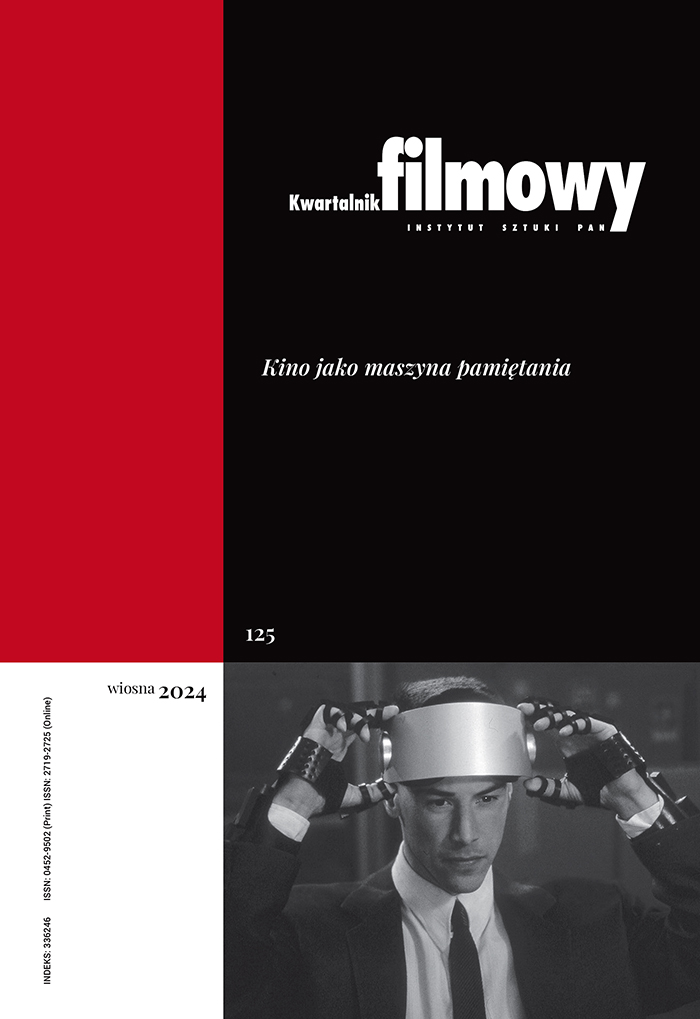Chris Eyre and Films About Native Americans
Abstract
In the article the author deals with “minority cinema” as made by artists of Native American origins. Pitrus points out that until the end of 1990s Native Americans, or “the Indians” were a group whose popular movie image was false and based on stereotypes rooted in classic westerns. The change of the perspective of the cinematic gaze on the Native American minority was brought about by the films of Chris Eyre, particularly his film Smoke Signals (1998), which was a first ever film to be entirely produced by people of Native American origins. The great success of this film (as measured by numerous prizes and multimillion profits) played a role in stressing the great importance of the Native American identity. The Native Americans in this film are portrayed as real people, with real worries and cares, and not some ethnically determined wax figures. The question of personal identity is central to the film. Pitrus also looks at film Skins (2002) in which Eyre creates a new image of the Native American minority. Pitrus argues that Eyre’s first two films created an interest in films about Native Americans and made possible for viewers to consider the Native Americans in a less stereotypical light.
Keywords:
Chris Eyre, native Americans, ethnic minoritiesReferences
Nie dotyczy / Not applicable
Google Scholar
Authors
Andrzej Pitruskwartalnik.filmowy@ispan.pl
Jagiellonian University Poland
Pracownik naukowy Instytutu Sztuk Audiowizualnych UJ. Autor książek: Gore, seks, ciało, psychoanaliza (1992), Kino kultu (1998), Zrozumieć reklamę (1999), Znaki na sprzedaż (2000). Nam niebo pozwoli. O filmowej i telewizyjnej twórczości Todda Haynesa (2004), Filmowcy i kiniarze (2004), Dotykając lustra. Melodramaty Douglasa Sirka (2006). Redaktor książek: Kino końca wieku (2000), Autorzy kina europejskiego II (red. z Alicją; Helman, 2005). Znawca problematyki kina niezależnego.
Statistics
Abstract views: 501PDF downloads: 126
License
Copyright (c) 2008 Andrzej Pitrus

This work is licensed under a Creative Commons Attribution 4.0 International License.
The author grants the publisher a royalty-free non-exclusive licence (CC BY 4.0) to use the article in Kwartalnik Filmowy, retains full copyright, and agrees to identify the work as first having been published in Kwartalnik Filmowy should it be published or used again (download licence agreement). The journal is published under the CC BY 4.0 licence. By submitting an article, the author agrees to make it available under this licence.
In issues from 105-106 (2019) to 119 (2022) all articles were published under the CC BY-NC-ND 4.0 licence. During this period the authors granted a royalty-free non-exclusive licence (CC BY-ND 4.0) to use their article in „Kwartalnik Filmowy”, retained full copyright, and agreed to identify the work as first having been published in our journal should it be published or used again.
Most read articles by the same author(s)
- Andrzej Pitrus, Mum Naked: The Naked Body of a Mother in Contemporary Visual Art , Kwartalnik Filmowy: No. 83-84 (2013): Body in Film
- Andrzej Pitrus, Chris Marker’s Travels in Time: The Curious Fate of “La Jetée” , Kwartalnik Filmowy: No. 89-90 (2015): Redefinitions of the Classics
- Andrzej Pitrus, An Essay Devoid of a Title, About a Journey Home, Which Home Does Not Exist and Perhaps Never Will Be, or to a Home Which Once Belonged to Entirely Someone Else , Kwartalnik Filmowy: No. 107 (2019): Journey, (E)migration, Pilgrimage
- Andrzej Pitrus, An Essay Devoid of a Title, About a Country that Turned its Back on its Children , Kwartalnik Filmowy: No. 105-106 (2019): Cinema and Political Transformation
- Andrzej Pitrus, It is Us Who Invented Time: “Ocean Without a Shore” and “Transfigurations” by Bill Viola , Kwartalnik Filmowy: No. 86 (2014): Dimensions of Time
- Andrzej Pitrus, Cinema Without Secrets , Kwartalnik Filmowy: No. 75-76 (2011): Faces of Reality
- Andrzej Pitrus, The Closed Spaces of Bill Viola , Kwartalnik Filmowy: No. 79 (2012): Interiors: On Cinematic Enclosed Space
- Andrzej Pitrus, Reckoning With German Cinema , Kwartalnik Filmowy: No. 80 (2012): Film at the Meeting Point of Cultures
- Andrzej Pitrus, Known and Unknown Forms , Kwartalnik Filmowy: No. 87-88 (2014): Film and Theatre
- Andrzej Pitrus, Eye to Eye With the Animal: “I Do Not Know What It Is I Am Like” and Intercultural Negotiations of Bill Viola , Kwartalnik Filmowy: No. 80 (2012): Film at the Meeting Point of Cultures











